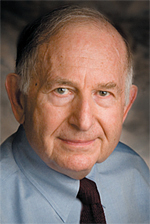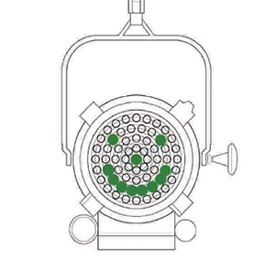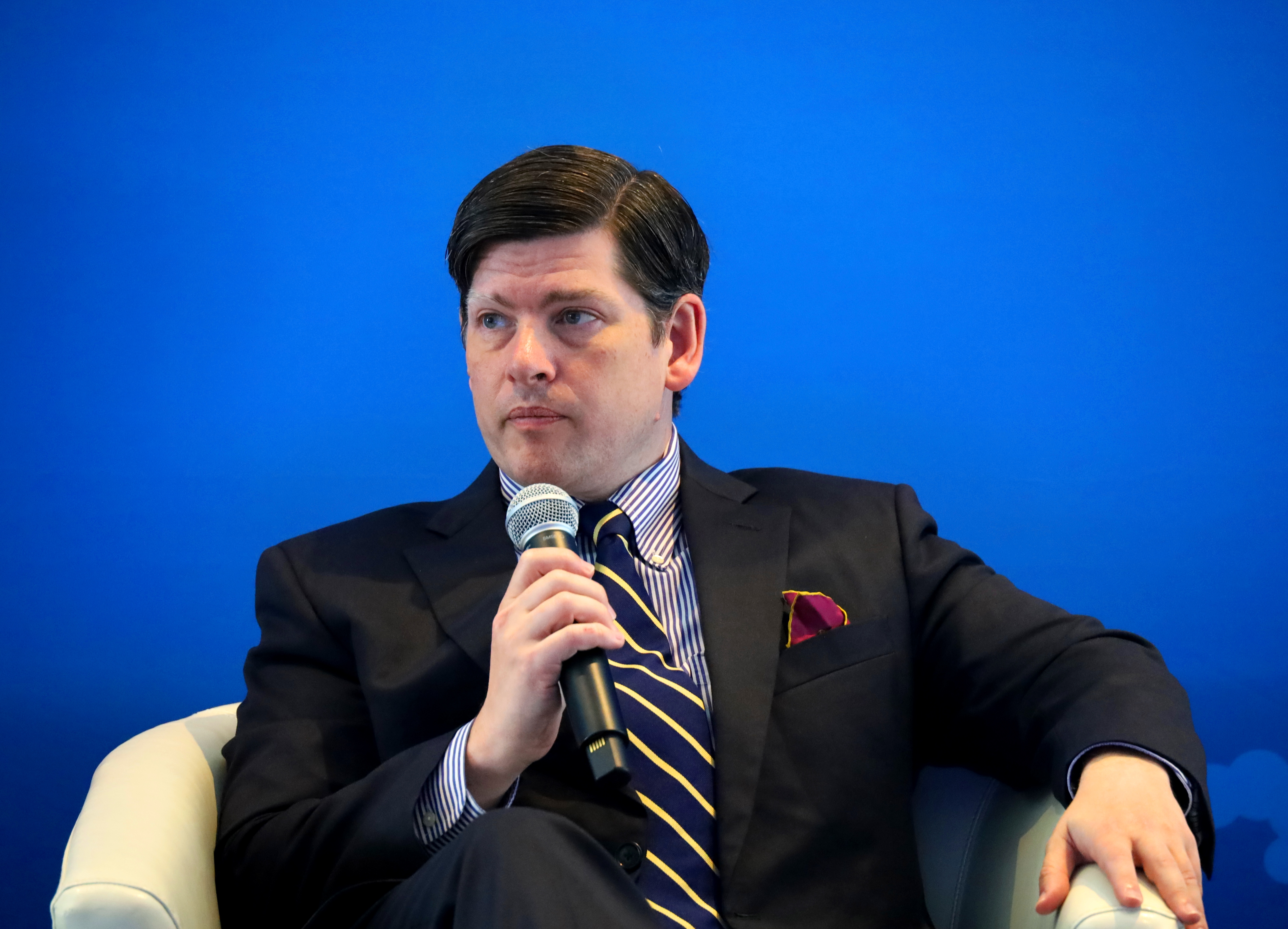What Shade of Green?

There have been a number of responses to my last column, "Lumens per Dollar." In that column, I compared the cost of obtaining light output between fixtures with different sources-in particular, LEDs. Tongue in cheek, I suggested the use of the (Klages) Investment Factor, the ratio of lumen output per dollar to compare fixture effectiveness. Most respondents voiced the identical reaction that I had, questioning the declaration that high-output LED technology is the panacea for every situation and will replace all traditional light fixtures.
An e-mail from Randy Read, the Supervisor of Lighting for the Christian Broadcasting Network clearly outlined the concern that television lighting designers have relative to acceptance of current LED fixtures. In my answer to him, I addressed my serious concern about fixture performance and a reluctance to accept these fixtures as a replacement for every application. The purpose of this column will be to present some additional thoughts on this subject and is an answer to Randy's basic question of how to outfit a studio to be "green."
'GREEN' IN NAME ONLY?
One of the main reasons that we are encouraged to accept LED fixtures is for power saving, an attempt to be energy efficient, "green" if you will. In reality, this power saving only occurs if you compare the output of a LED fixture's individual source color (Red, Blue and Green in the simple, three color fixture configuration), with what you would require if you had a traditional fixture with a gel. There is a rather startling result.
If you are happy with only these basic colors used individually, then you can bask in the fact that you have indeed been "green" in the use of this fixture. However when you grow tired of these very saturated colors and long for more pleasant less-saturated hues, you may have to give back the honors that you received for being so environmentally aware. This is because you will discover that the luminous efficiency goes way done and is the same as if you used an incandescent lamp with a gel. At "white," with each color at full, the LED fixture falls apart in performance.

LED Fresnel In my response to Randy Read, I did a review of energy saving alternatives for a few general fixture types in answer to his very basic, but pertinent question about how to achieve the "green" goal.
Forgetting about fixture efficiency for the moment, let us consider just lowering the lighting intensity as an attempt to save energy. This would seem to be a very direct approach particularly due to the very high sensitivity of today's film and video cameras. Before we attempt this obvious path, we must consider locale. For example, it would be foolish to even consider any energy saving method while shooting outdoors, "Noonday in the Market." If true zero energy devices as reflectors, cannot be used due to positioning restraints, the only means of achieving contrast control may be to use the biggest, brightest source in your kit, say an 18kw HMI . Our attempt to be "green" has been compromised by the reality of sun-lighted exterior.
Another example where we may have to throw away the "how to save energy" manual is the situation where we are shooting a theatrical presentation with an audience. In this case we must consider the audience visibility of the performance. Minimum lighting level would be determined not by energy saving but by the visibility of the person sitting in the last row of the venue. So, our discussion about achieving the green status applies only to productions where we have absolute control of the exposure level, most interior spaces, most nighttime locations and, most typically, a studio. In this case the first step towards "green" would be to lower the operating light level. Other than stumbling over a cable in the darkness behind the set, there is no question in my mind that this is the first step. The second step is choosing the most efficient fixtures that will do the job, and this is a most important concern.
The range of fixtures that we will use in a studio can cover the entire gamut of traditional as well as the latest "break-through" devices. In our quest for environmentally friendly light sources, let's take an easy one, a softlight. Here is an area that an LED fixture can actually be employed. In this case, the larger the aperture of the source, the better the softness. However, if we're looking for more bang for the buck, I'm afraid fluorescents win hands down. Efficiency is a good three times incandescent as well as LED sources. Equipment is light, can be dimmed with little change of spectral characteristics, plenty of choices and represents a mature fixture. At the present time I would prefer this unit over any attempt to date that has tried to make LEDs work for this application.
MOVING LIGHTS
At the other end of the scale, what about moving lights? Since most arc discharge source to begin with, the efficiency of the source itself is very "green." However, much is lost in the optics since it is mandatory in today's competitive market that a moving light contains as many gimmicks and "features" that can be crammed in the enclosure. But at any rate because the same efficiency loss is the same order of magnitude in an incandescent moving light, the common arc version would be the choice from an energy-saving standpoint. Since they are less efficient, LEDs are not a practical choice. Plasma sources may be in the running in the future here as they lend themselves to more optical efficiency due to their small physical source size. Remember that any moving light comes complete with a high initial cost as well as high lamp per hour operating cost. Maintenance can be a large issue.
How do we meet our "greening" goal if we are desirous of having some ellipsoidal in our complement? There is a real dilemma here. It is true that there are retrofit units with discharge lamps that increase overall lamp efficiency a great deal. But the solution is not without pitfalls, color temperature, dimming ability and cost. As the studio complement of ellipsoidals is usually small, I would, in this case, justify using the lesser energy efficient incandescent ellipsoidal units. They exhibit the exact reverse of the pitfalls that come with discharge sourcesÖ and certainly are inexpensive.
And now for the real impasse. Suppose you are an advocate of hard light sources, (yes, I confess, I am-because it's fun and I like the result). Let us assume that your studio workhorse is the 2 kW 10-inch Fresnel spot. Fitted with 8 leaf barndoors, your favorite tool is easy to use and gives just the right performance and control that you like. From an energy saving viewpoint, it is really quite inefficient and will not qualify as green. The overall luminous efficiency of this fixture may be less than 15 lumens per watt. Going to a more efficient lamp as a metal halide certainly increases our "greenness," but again, it comes complete with color temperature and dimming issues. How about using an LED "spotlight," a fixture with narrow angle lensed LED lamps? It can work under certain circumstances but is very much the same as using a PAR fixture-it splashes all over the place! Be prepared to be frustrated as you lose control.
I hope that now you realize that we are really stuck. If I am determined to retain my use of my faithful, predictable Fresnel spotlight, I have only the one alternative left, the one that began this discussion: lower the light level. The quick way is to just to substitute a lower wattage lamp. In our example, put a 1000 watt lamp in the 2000 watt fixture. Nearly all fixtures have substitute lower wattage replacements with the same filament position. However, you will have to bend the economy slightly as you will spend about 50 percent more for the lower wattage substitute. You are now "green," a little de-saturated perhaps.
Bill Klages would like to extend an invitation to all the lighting people out there to give him your thoughts atbillklages@roadrunner.com.
Get the TV Tech Newsletter
The professional video industry's #1 source for news, trends and product and tech information. Sign up below.
